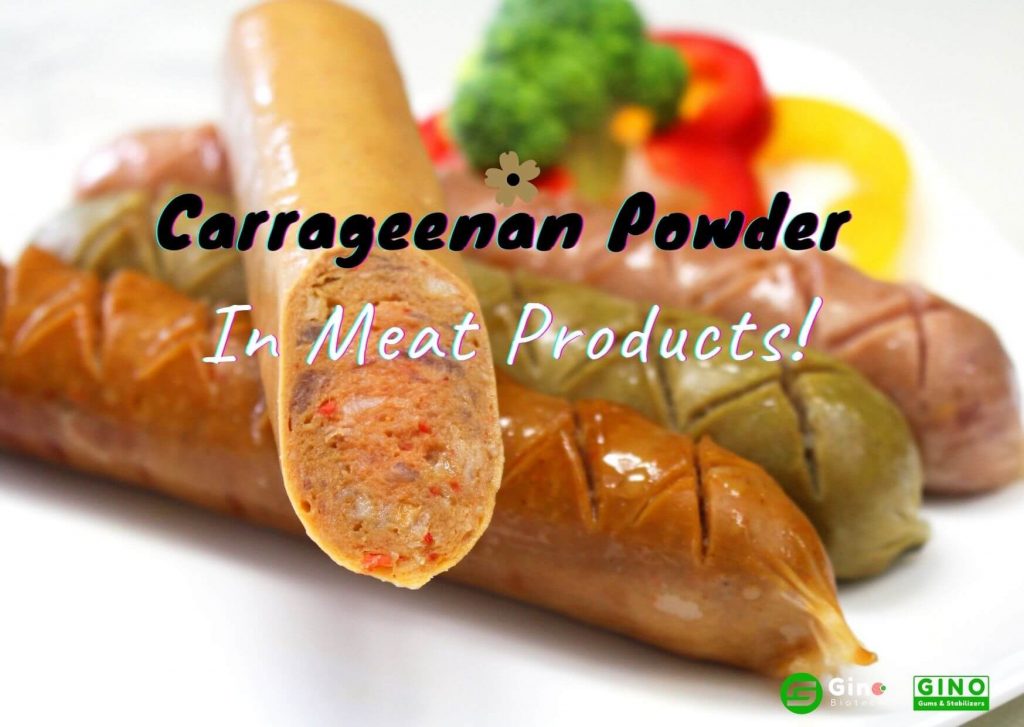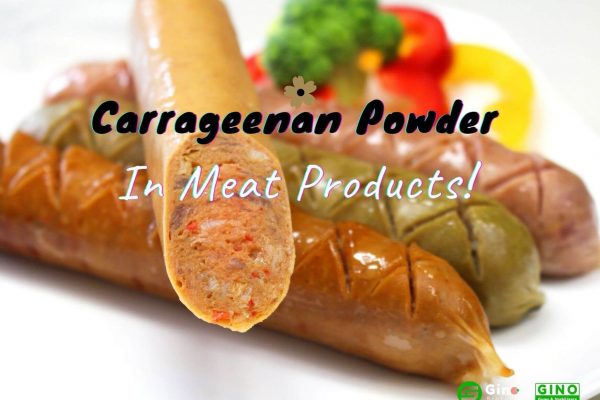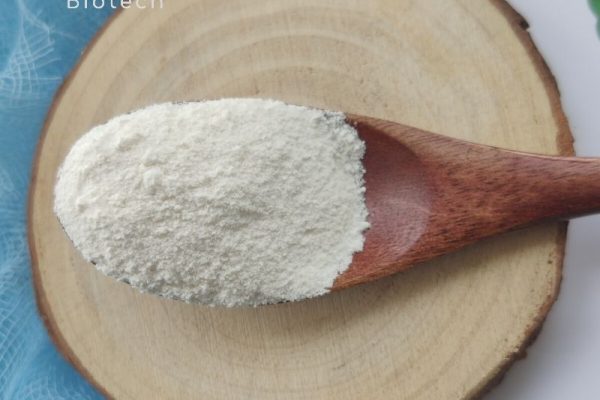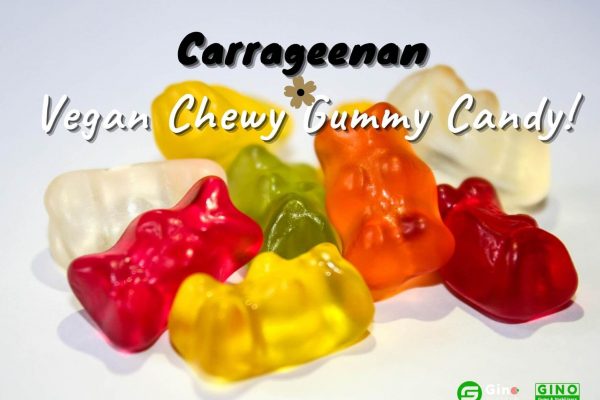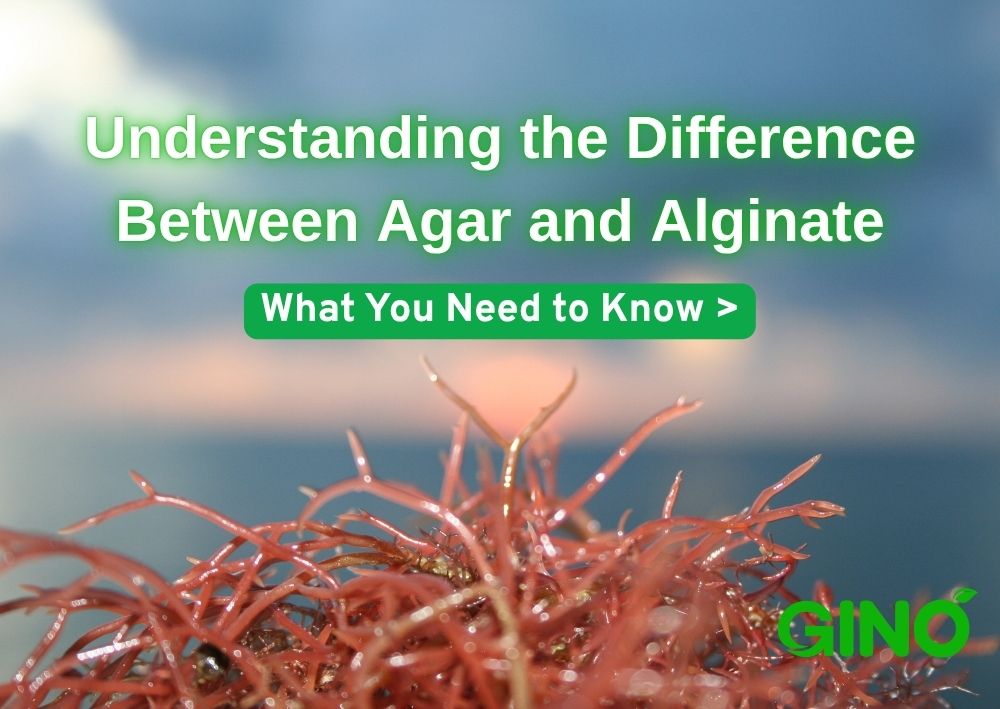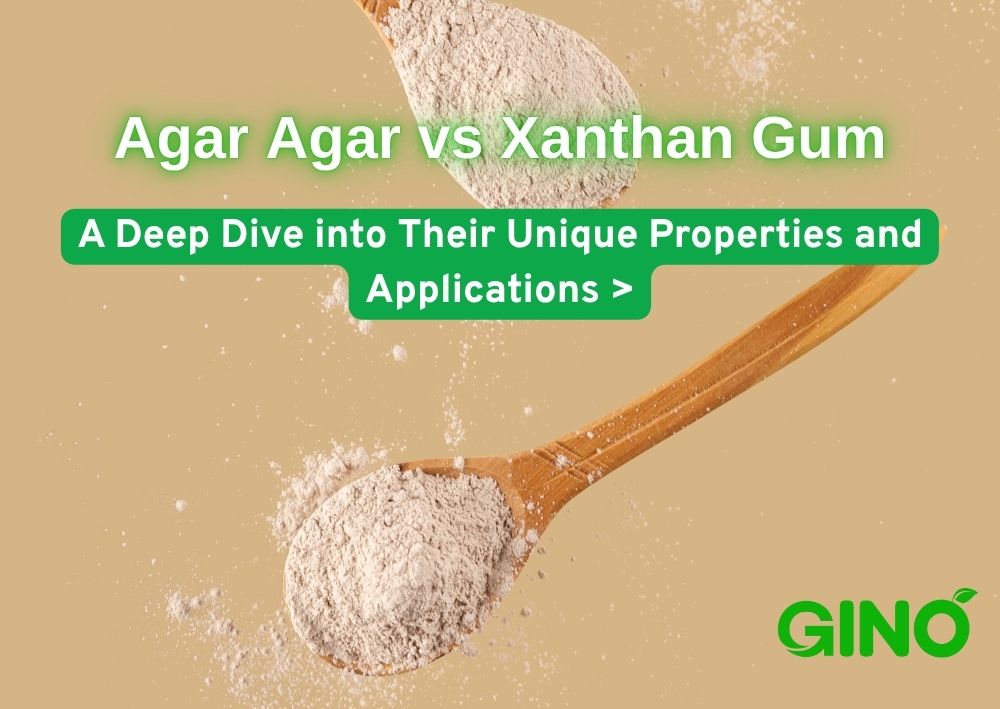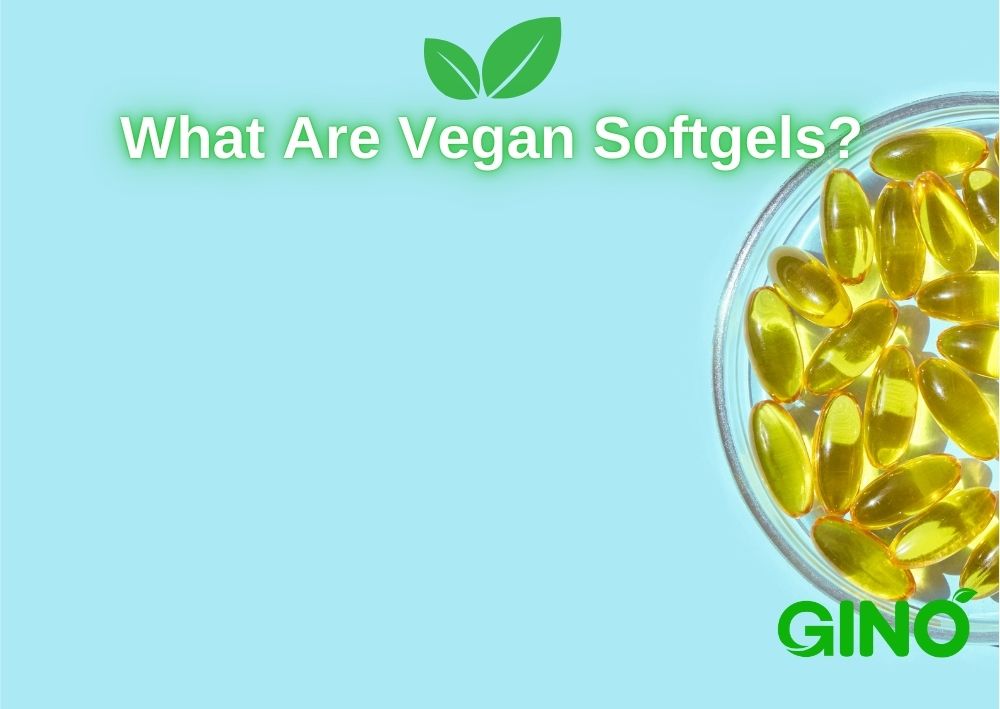Carrageenan Uses in Food: Top 10 You Should Be Most Familiar With
Carrageenan Uses in Food |
Table of Content
Carrageenan is a class of hydrocolloids extracted from marine red algae! It has been widely used in the food industry because of its excellent coagulation, thickening, emulsification, film formation, stable dispersion, and other properties, as well as its function as dietary fiber.
Talking about carrageenan uses in food, today we will introduce the 10 most common applications for you.
1. Carrageenan Uses in Food: Ice Cream & Frozen Treats
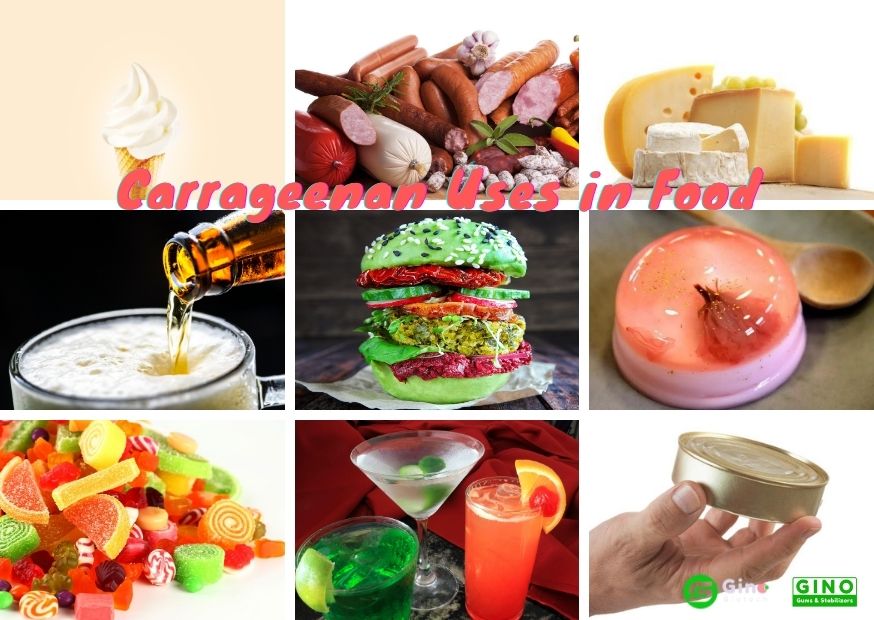

In the production of ice cream, carrageenan can increase the formability and anti-melting property of ice cream and improve the stability of ice cream when the temperature fluctuates.
- Carrageenan complexes with proteins to control the aggregation and coagulation of fats and oils, strengthen the dispersion of fats and oils, and control the interaction between fats and proteins, thus improving the stability of milk proteins when subjected to heat.
- Improving foaming, forming fine and stable bubbles, thus improving expansion.
- Helping to shape the product and prevent shrinkage.
- Improving expansion and contraction, improving structure, homogeneity, stability, and resistance to melting, uniform distribution of fat and other solid components, and prevention of emulsion separation;
- Prevent ice crystals from increasing in size during manufacturing and storage, making ice cream finely organized, well structured, lubricated, and palatable, and less likely to melt when placed.
These characteristics and functions of carrageenan make the production of ice cream more simple and reasonable, easy to operate, and facilitate quality control.
The usual amount of carrageenan in ice cream is 0.01% to 0.03%.
2. Carrageenan Uses in Food: Meat Products
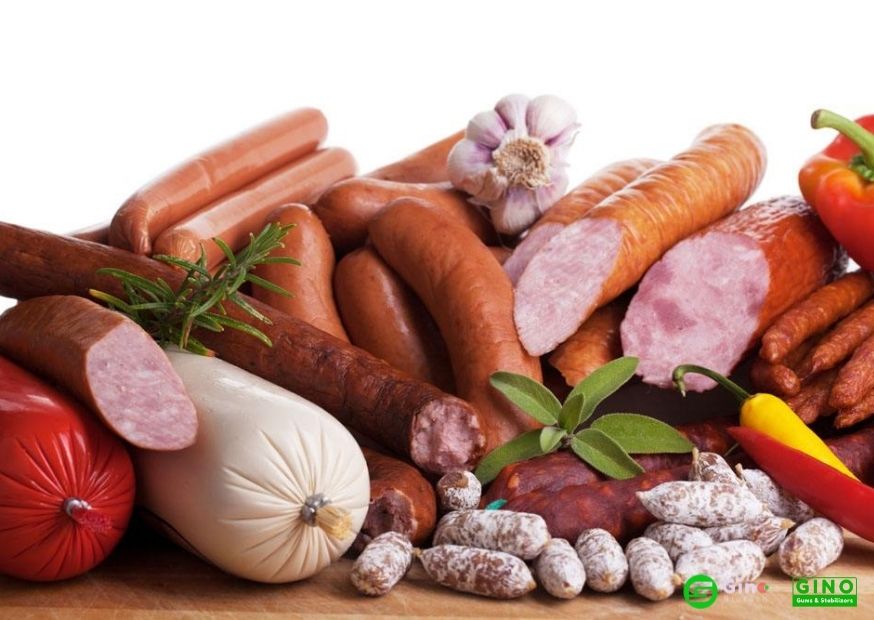
Carrageenan can make products with good elasticity, good slice ability, moderate toughness, crispness, tenderness, and smoothness.
Carrageenan is used in ham and ham sausage, most notably to provide proper water retention and, due to its ability to complex with proteins, to provide a fairly good tissue structure, resulting in a delicate, well-sliced and tasty product, and is an essential additive for ham production.
2.1 Carrageenan in Whole Muscle Products
For applications in the production of whole muscle products, carrageenan is added to the meat product by injection of brine.
For this application, it is important to keep the viscosity of the brine at a low level without dissolving and dispersing the carrageenan, thus facilitating the injection.
The κ-type carrageenan is ideal for this purpose.
The insolubility (dispersibility) of carrageenan in brine is controlled by the addition of a phosphate (usually with tripolyphosphate) and sodium chloride, in cold water below 5°C.
The principle is that the ionic environment formed by the dissolution of phosphate and salt facilitates the dispersion of carrageenan; while the high ionic concentration prevents the expansion of κ-type carrageenan molecules, keeping it in a non-curling state and making the brine less viscous.
In fact, low-viscosity saline can prevent the pressure from building up, avoid needle occlusion, and reduce the appearance of torn connective tissue in the transverse muscle bundle in multi-needle whole-muscle injection treatments.
By controlling the brine temperature and the order of addition of ingredients, with appropriate injection treatment and drum massage techniques, the brine with different κ-type carrageenan content can be used to maximize its functionality.
In addition, proper adjustment of the carrageenan content in the brine can also effectively control the moisture loss in cooked meat products to less than 5% of the total injected volume.
2.2 Improvement of Carrageenan for the Quality of Meat Products
The role of carrageenan is to produce a gelling effect with proteins to form a complete tissue structure of meat, which is the key to the production of processed meat products.
The carrageenan-protein interaction depends on a number of factors, including the degree of protein denaturation, ion type, and concentration, pH, concentration, processing temperature, protein type, quality, etc.
In brief, by controlling the bonding between the negatively charged sulfate group in carrageenan and the positively charged amino group in the globular protein with electrostatic force, additional stability can be provided to the carrageenan structure under appropriate environmental conditions.
2.3 The Other Type of Carrageenan-Protein Bonding
The other type of carrageenan-protein bonding is formed through the association of divalent cations between the sulfate group in carrageenan and the negatively charged carboxyl groups distributed in the protein molecule.
The commonly used divalent cation is the calcium ion, and the magnesium ion has the same function.
It is important to note that if cations are added in excess, especially when using hydrolyzed proteins and during excessive treatment (high heat), carrageenan-protein coagulation or precipitation can occur.
2.4 iota carrageenan
When iota carrageenan is used in an environment with a high concentration of ions, such as brine used for processing meat products, its molecular structure expands and partly dissolves, resulting in a high viscosity of the brine.
If brine with iota carrageenan is injected into the whole muscle, the product will show many "straining marks", resulting in poor soft tissue texture and poor quality. Therefore, i-carrageenan is not suitable for whole muscle or cooked meat products injected with brine.
On the contrary, for products made from a combination of lean whole shoulder meat and finely chopped meat, or whole ground fine meat or fine chopped meat products (sausages or frankfurters), the best meat texture and stability can be achieved by using ι-carrageenan, or mixtures of ι- and κ-carrageenan (often in combination with synergists such as supplemental proteins, gums or starches).
Since all meat ingredients for these products are made from finely chopped meat mixes or minced meat, the viscosity of the brine becomes unimportant and solves the problem of using ι-carrageenan.
In most cases, all ingredients are added to the meat in the grinding or chopping equipment, allowing for a more uniform distribution of the ingredients and for the hydration of the carrageenan prior to manufacture and storage.
In deep processing of shoulder meat or fine chopped meat products, the muscle fibers are cut into fine pieces so that the meat proteins, moisture and carrageenan can interact with each other more effectively for better results.
2.5 Mechanically Deboned Meat (MDM)
In addition to this, the addition of l-carrageenan to mechanically deboned meat (MDM) improves the meat strength and water-holding capacity of its processed products. Without the addition of any ingredient, these meat properties are poor.
Another advantage of using ι-carrageenan in this high-protein, low-fat meat products, such as MDM, is that it controls the flow of moisture in the finished product before and after cooking, as well as the freeze-thaw stability of the product.
Also, ι-carrageenan can mimic the properties of fat in low-fat meat products, giving the consumer the taste of a high-fat cooked meat product without the calories of fat.
In addition, in high-fat meat products, such as sausages and chorizo, ι-carrageenan interacts with lecithin to help maintain emulsification and moisture stability of the meat product, thus reducing cooking weight loss and provide better organoleptic acceptability of the finished product.
The source of meat for whole muscle, shoulder meat, or fine chopped meat products can vary according to the quality requirements needed for the product or consumer tastes, etc. For example, pork, beef, lamb, etc. can be processed individually or with ingredients using carrageenan as a basic stabilizer to produce meat products with different textures and nutritional values.
In the processing of whole muscle, finely chopped meat fillings, and mixed meat products, carrageenan is mostly used as the main stabilizer to maintain moisture and meat stability. As for various poultry products, such as turkey, chicken, and duck, the hydration properties of their proteins are worse than those of pork, beef, and lamb, so they need the assistance of ingredients to maintain the stability of meat and moisture. However, in the deep processing of poultry products, the amount of carrageenan than in pork, beef, and lamb products for high.
However, according to the regulations, the overall content of carrageenan in meat products can not exceed 1% of the total formula, and in more moisture processing formula, usually can be supplemented with additional protein and other synergists such as gum and starch to control the role of carrageenan on meat tissue and moisture stability.
3. Carrageenan Uses in Food: Dairy Products
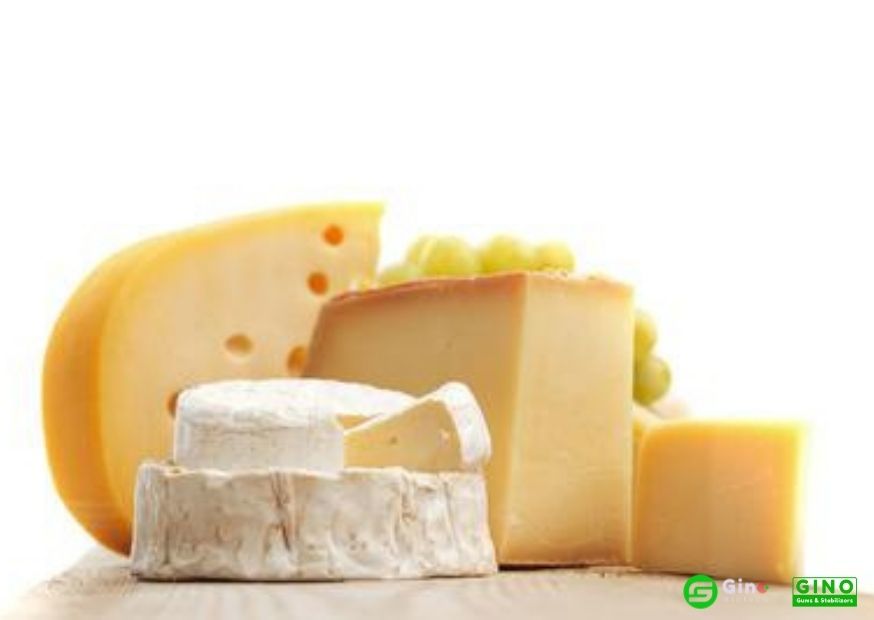
Carrageenan produces solidification in cow's milk and acts as a coagulant.
Acts as a suspending and stabilizing agent in cocoa milk, cocoa cream of wheat and cocoa confectionery syrup.
In sour milk, cottage cheese and cream, it stabilizes the milky mixture and induces the formation of gelling.
In cocoa buttermilk made with cocoa powder, cocoa powder often sinks, but adding carrageenan as stabilizer can make cocoa powder evenly dispersed in buttermilk and prevent the sinking of cocoa powder.
Since carrageenan has the unique property of complexing with casein in cow's milk, it can prevent the coagulation and precipitation of cow's milk products (such as lactic acid drinks, etc.).
Carrageenan is the best stabilizer for protein.
4. Carrageenan Uses in Food: Fruit Wines and Beers
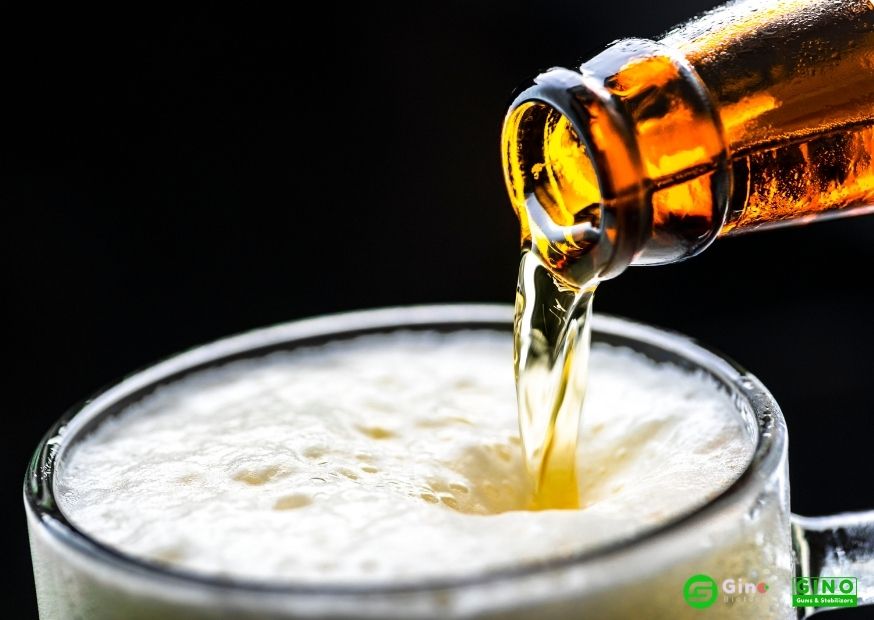
Carrageenan can be used as a clarifying agent and as a foam stabilizer.
Fruit wines and beers contain some colloidal substances that make the wine cloudy and precipitate, so clarifying agents must be added to clarify them.
However, it is difficult to remove these substances completely and it takes a long time to do so.
Carrageenan, as a clarifying auxiliary filtering agent, can make the coagulation and sinking effect complete and fast.
5. Carrageenan Uses in Food: Artificial Protein Fibers and Artificial Meat
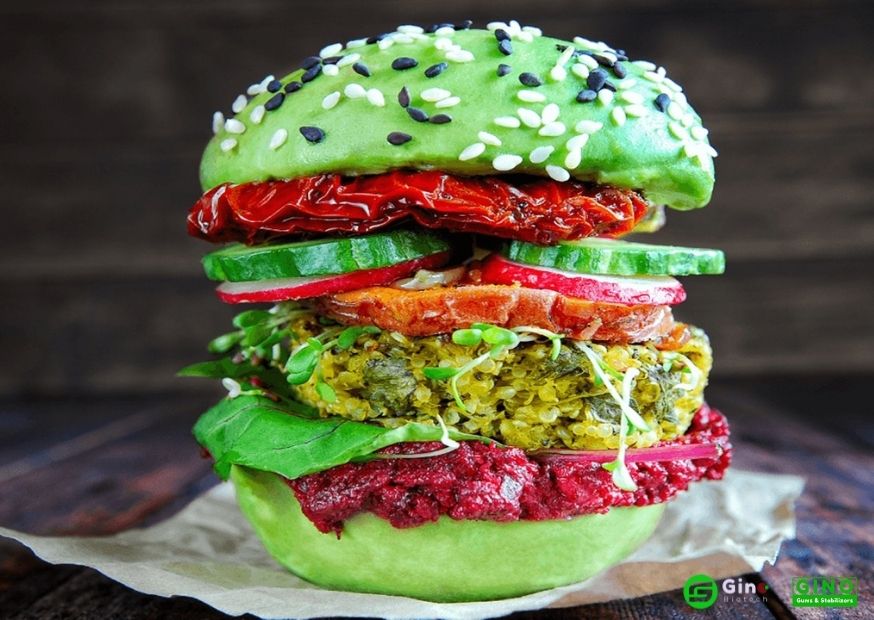
For the production of artificial protein fibers, the protein solution must go through an aging process to increase the viscosity of the sol, which takes a long time and is also expensive, and it is difficult to spin when the protein concentration is low or when the protein is impure.
After adding carrageenan and alginate, the protein solution does not have to go through the aging process, the concentration of low or no purified protein can also be used for spinning, and can also improve the strength and water absorption of the spun fiber.
For example, using degreased peanut grains as raw materials, with pH 8.5 dilute alkali extraction protein, filtering slag, filtrate with the right amount of carrageenan and fucoidan, heating, cooling, and then filtering, the solution viscosity between 0.1 ~ 0.5 Pa-s, the protein solution by the spinneret spray to the solidification solution, and then wash, it will get artificial protein fiber.
Soybean, cotton, and milk protein after pressing can also be used to produce artificial protein fibers.
The artificial protein fiber can be further used to produce artificial meat when carrageenan is used as a binder.
Due to the sulfate group on the carrageenan molecule, it can be combined with protein molecules to form a complex, thus linking the protein fibers together and forming a block to form artificial meat.
6. Carrageenan Uses in Food: Jellies and Puddings
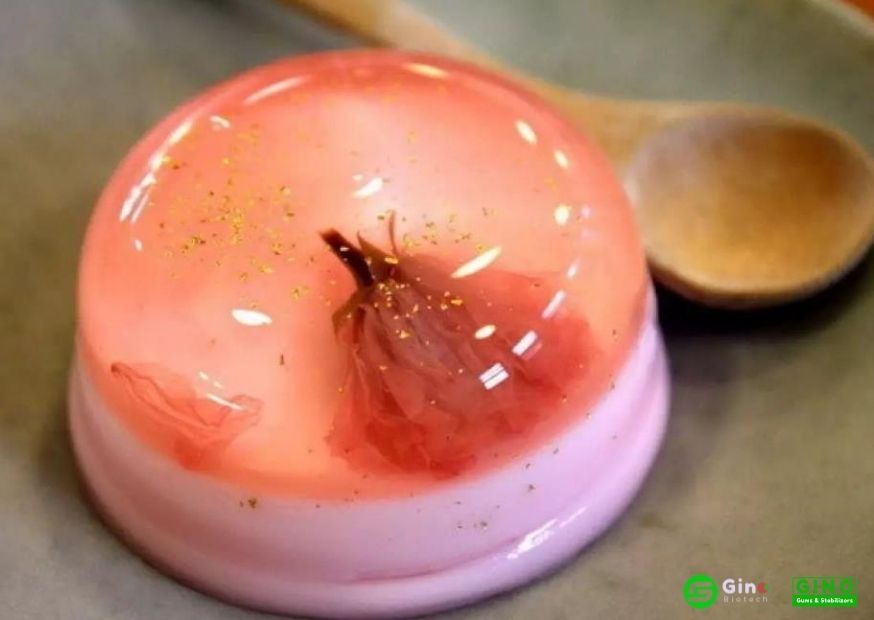
Carrageenan is the preferred gelling agent for jellies because of its unique gelation properties. Jellies made from carrageenan are elastic and have no water separation.
7. Carrageenan Uses in Food: Candy Manufacturing
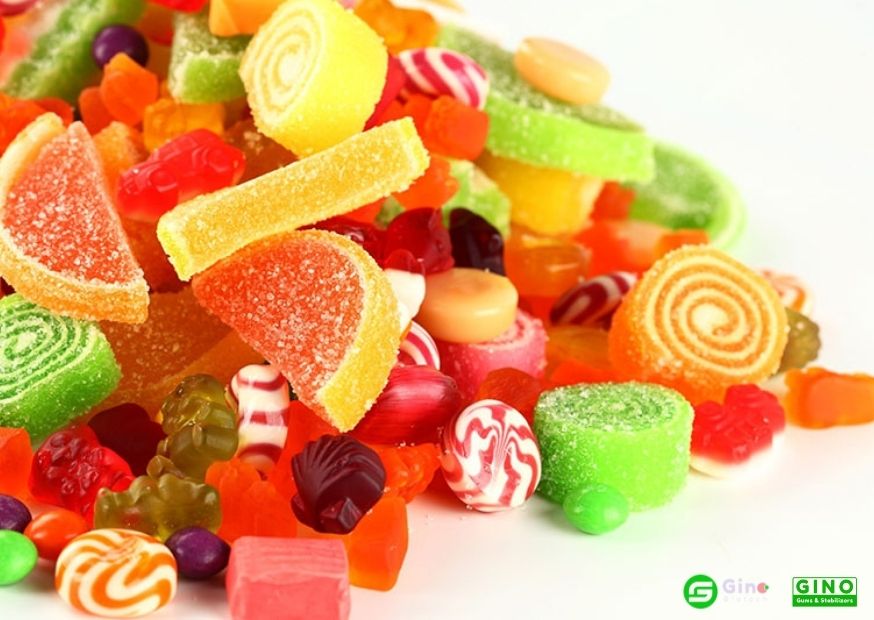
Carrageenan has been used to produce transparent fruit candies in China for a long time, it is smooth and not sticky, and its transparency is better than that of agar, and the price is lower.
Used in the production of general hard and soft candy, it can make the product taste smooth and more elastic, small viscosity, and higher stability.
8. Carrageenan Uses in Food: Beverage Manufacturing

When some fruit juices are left for a long time, the fine particles contained in them will sink and affect the appearance, even after high pressure homogenization.
Adding carrageenan as a suspending agent and stabilizer can make the fine pulp particles evenly suspended in the juice, greatly slowing down its sinking speed, and the shelf life of the juice is longer than that of xanthan gum.
At the same time, because of the low viscosity of carrageenan, it is not easy to cause paste, and can improve the taste when drinking.
9. Carrageenan Uses in Food: Canned Products
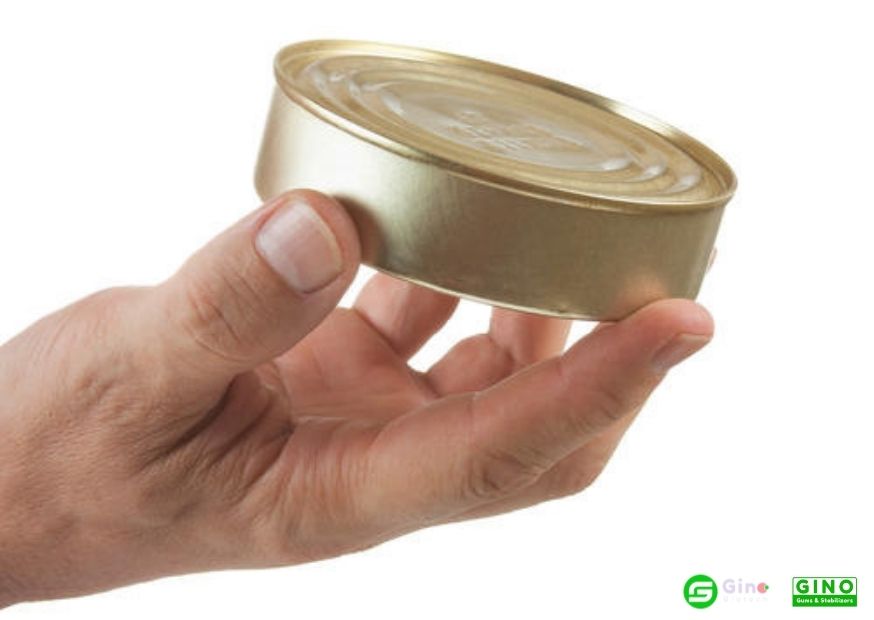
It works well as a coagulant in general canned goods as well as in canned fish or meat.
The use of carrageenan as a coagulant is not limited by the content of soluble solids and pH of the product, whether sugar is added or not, and whether it is acidic, neutral, or alkaline, carrageenan can form a gel, and its applicability is greater than that of gelatin and pectin.
10. Carrageenan Uses in Food: Bakery Products (Bread, Creamy Snacks)
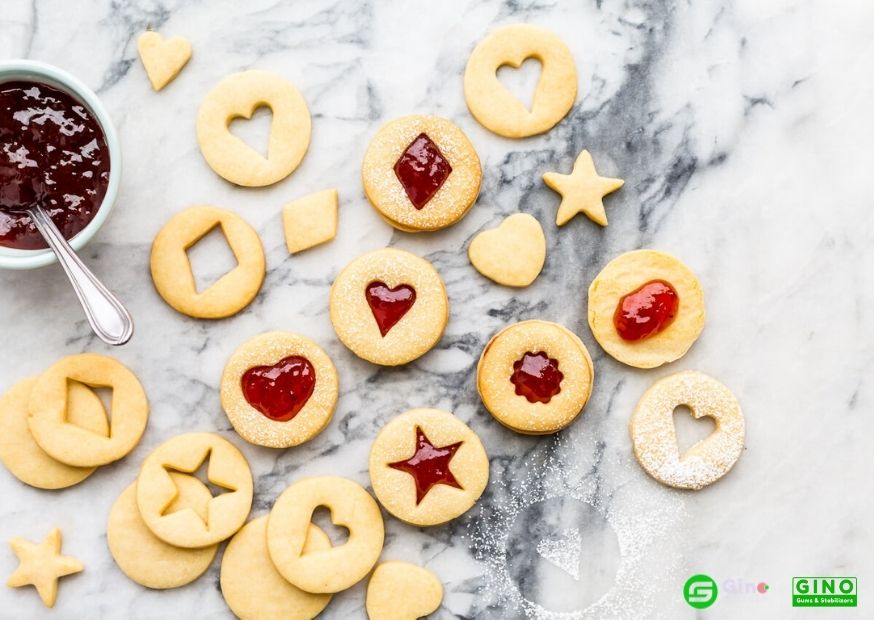
Fresh bread has a soft and elastic core, but when it is left to age, the hardness and brittleness of the bread gradually increase and the special flavor of the bread gradually disappears.
However, adding carrageenan (0.012%~0.02%) can effectively increase its water retention capacity and thus delay aging.
The Development of Carrageenan
China's National Food Safety Standard-Food Additives-Carrageenan (GB1886.169-2016) stipulates that carrageenan can be used in appropriate amounts for all kinds of food according to production needs.
The United Nations Food and Agriculture Organization (FAO) and the World Health Organization (WHO) Expert Committee on Food Additives (JECFA) removed the limit of daily intake of carrageenan in 2001 and confirmed that carrageenan is a safe, non-toxic, and non-side effect food additive.
The safety and non-toxic properties have been confirmed by the Joint Expert Committee on Food Additives (JECFA) of the Food and Agriculture Organization of the United Nations and the World Health Organization.
Carrageenan was first extracted from seaweed in 1844 and industrial production began in the 1930s. Carrageenan has been used in China since 600 BC and in Ireland since about 400 AD.
Carrageenan was first widely used in Europe and the United States, and now the world's production of carrageenan accounts for the second-largest amount of algae-derived edible gum.
In recent years, carrageenan has been developing rapidly at home and abroad, and the demand for it has increased greatly. Its unique properties cannot be replaced by other resins, which makes the carrageenan industry develop rapidly. Now the total annual production of carrageenan in the world has far exceeded the production of agar, and the application prospect is broad.
The research on carrageenan in China started late, and the industrial production of carrageenan in the real sense was not formed until 1985, of which 80% is used in food or food-related industries. Although there is great progress in the research of carrageenan application in the food field, there is still a gap between the basic research on carrageenan morphology, structure, qualitative and quantitative analysis, and carrageenan biotechnology and the international research level. After all, our industrialization started late, and the only way to narrow the gap and catch up is to do it with care.
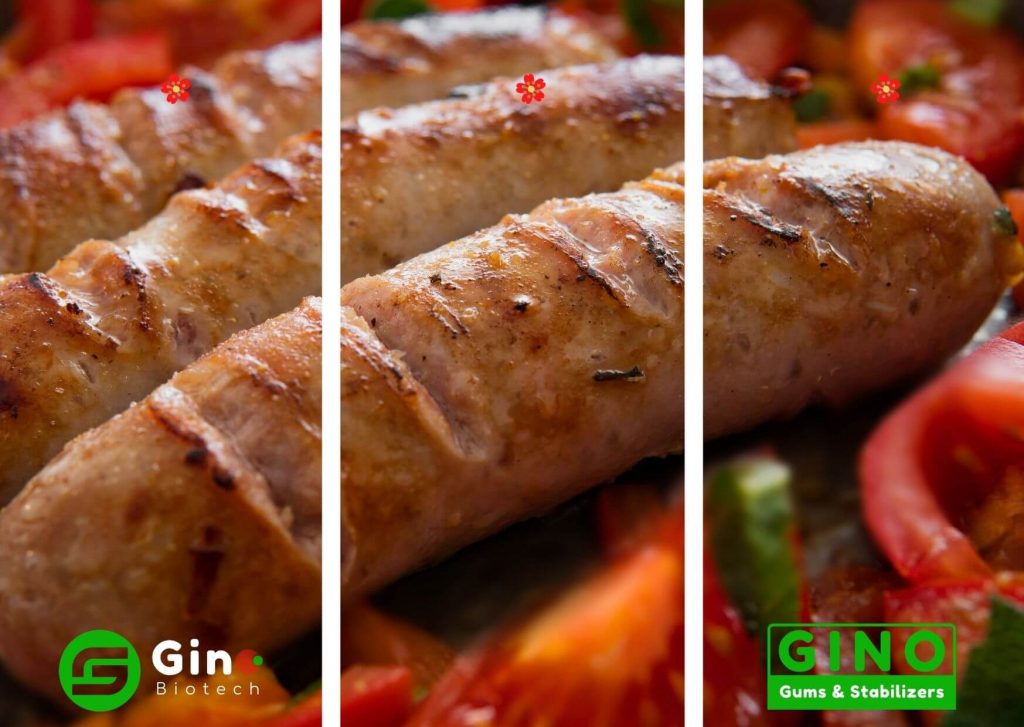
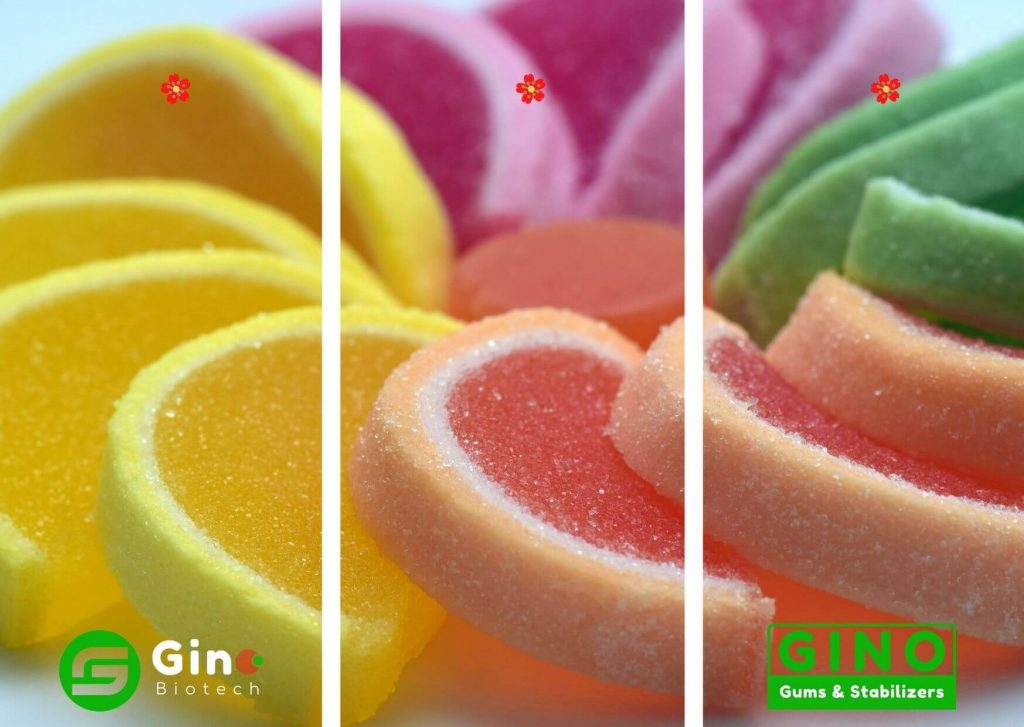
Gino has developed a wide variety of jelly powder (Multiple Compounding of Thickeners), including:
- Refined Kappa Carrageenan
- Refined Iota Carrageenan
- Semi-Refined Kappa Carrageenan
- Semi-Refined Iota Carrageenan
As one of the most professional carrageenan suppliers and customized solution providers, our products don't stop there; more new products are on the way.
We are here waiting for you to explore the endless possibilities with us!
Related Articles
Recent Posts

We are a biotech company specializing in the research, development, and commercialization of innovative and technological food additives hydrocolloids Agar Agar, Carrageenan, and Tailor-Made Stabilizer Solutions.
With the extended know-how and experience in the research, application, and use of Hydrocolloids, we could provide one-stop-shop customized solutions perfectly matched to the needs of our customers.
Our products cover the needs of the Meat, Dairy, Bakery, Confectionery, and other industrial sectors.


